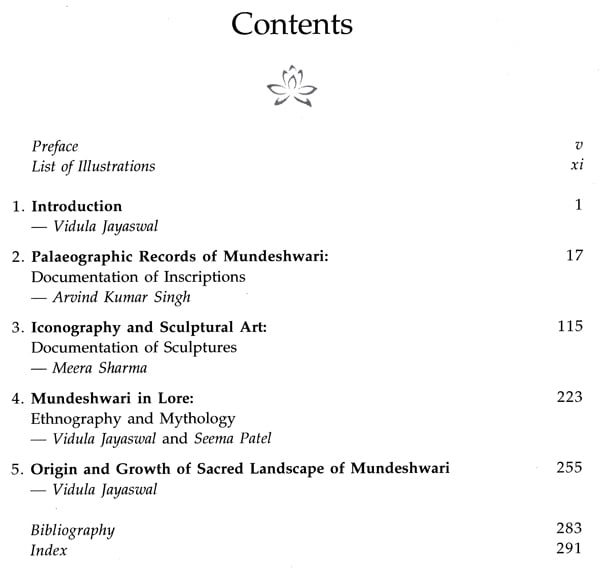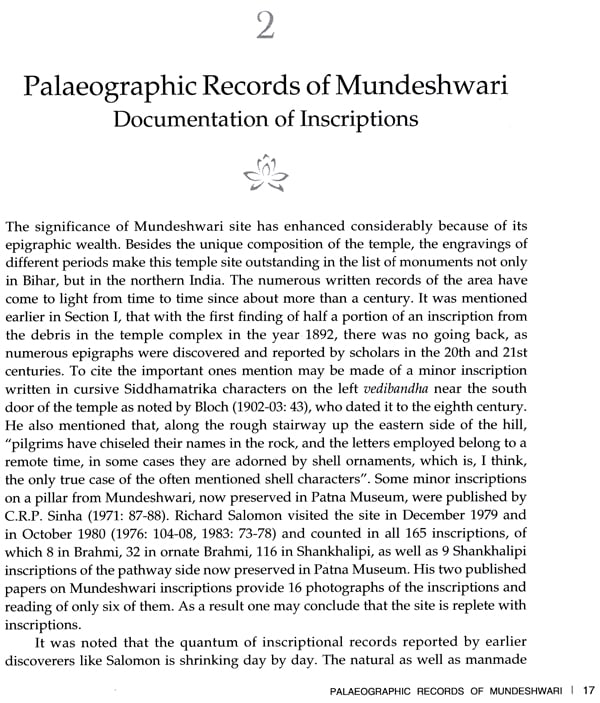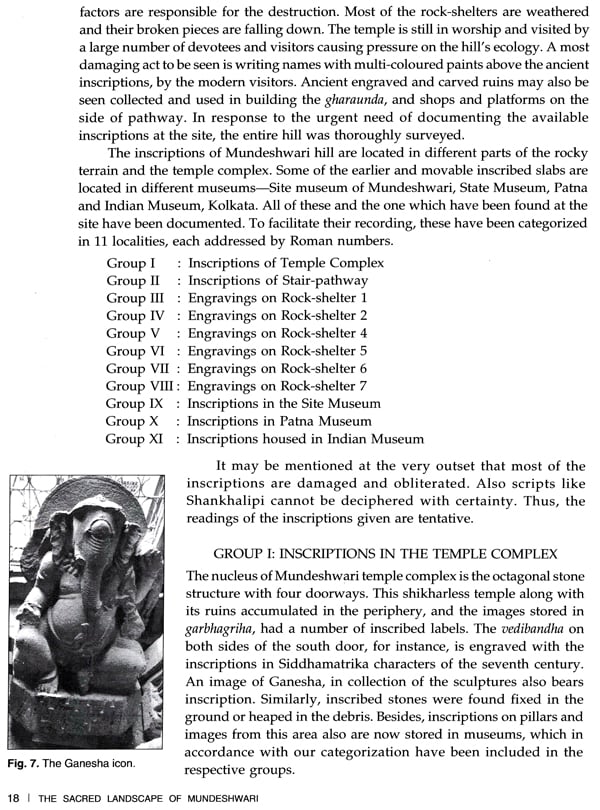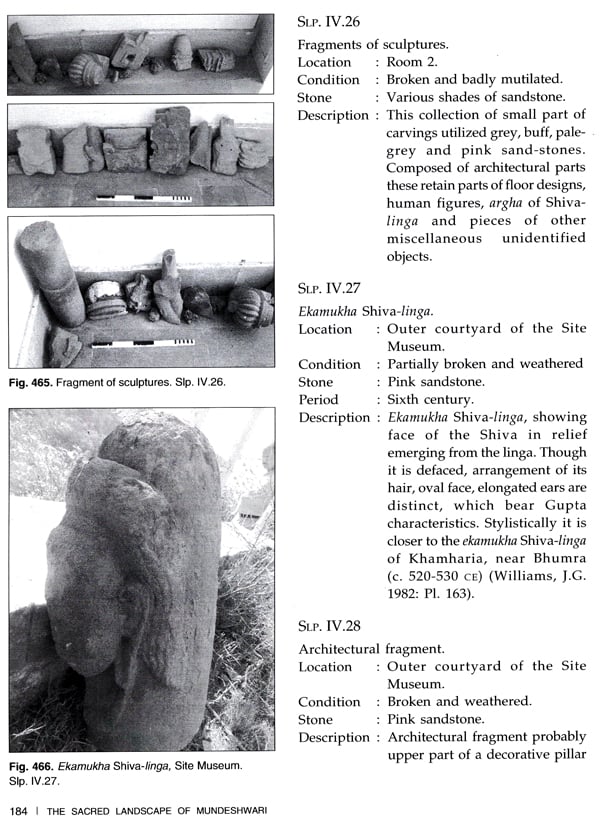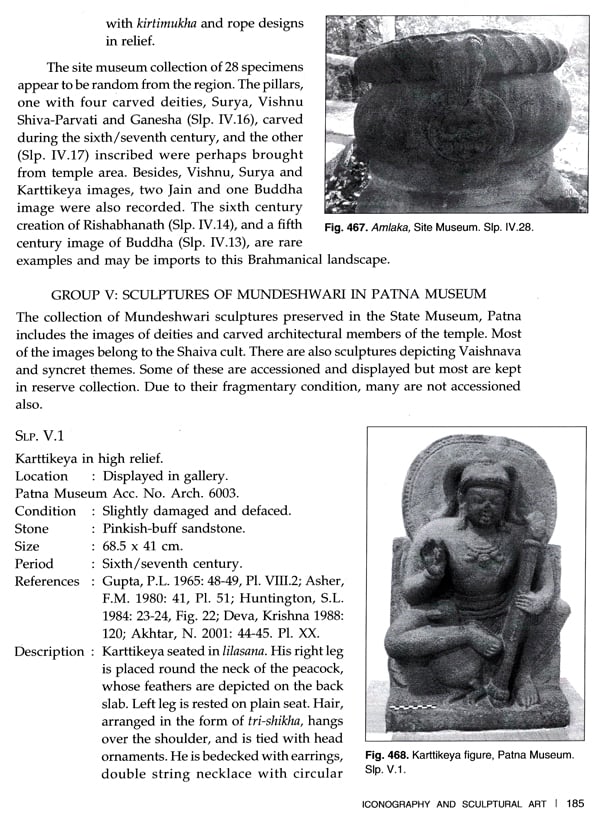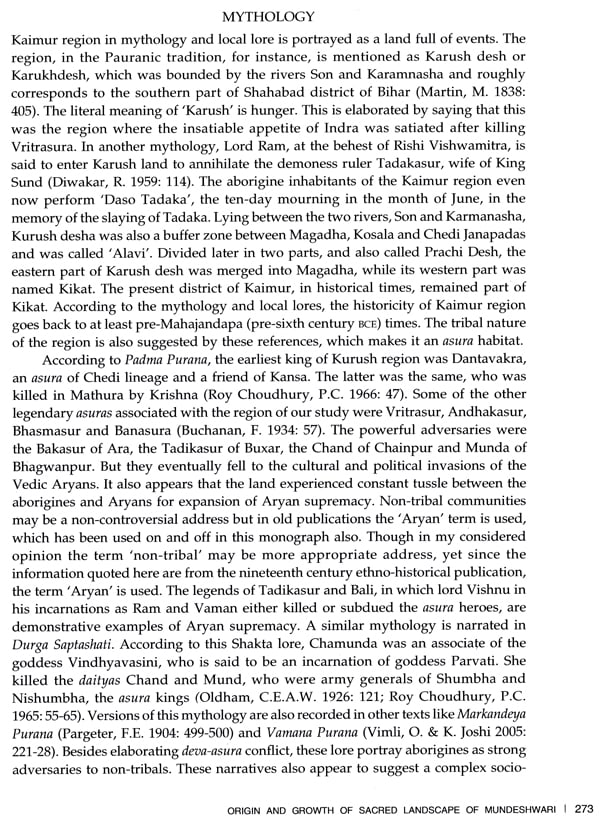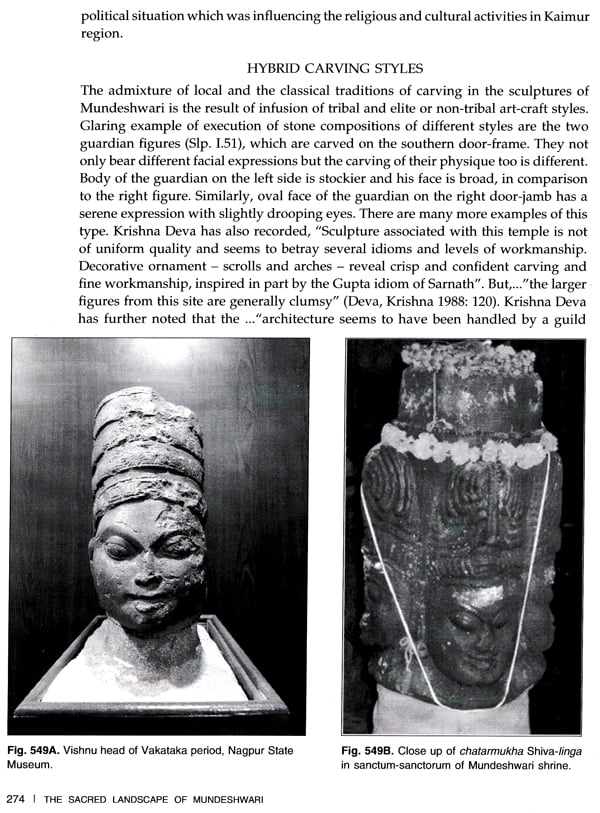
The Sacred Landscape of Mundeshwari (The Oldest Living Temple)
Book Specification
| Item Code: | NAS066 |
| Author: | Vidula Jayaswal, Arvind Kumar Singh and Meera Sharma |
| Publisher: | ARYAN BOOKS INTERNATIONAL |
| Language: | English |
| Edition: | 2017 |
| ISBN: | 9788173055867 |
| Pages: | 324 (Throughout B/W Illustrations) |
| Cover: | HARDCOVER |
| Other Details | 11.50 X 9.00 inch |
| Weight | 1.17 kg |
Book Description
Former Professor and Head of the Department of A.I.H.C. & Archaeology, Banaras Hindu University, Dr. Vidula Jayaswal is at present Fellow, Dr. R.C. Sharma Chair, Jnana-Pravaha, Varanasi. An archaeologist of repute, she has published more than 75 research papers in national and international journals. She also has around 20 books to her credit. Her passion for the history of Varanasi has resulted in the discovery of about a dozen sites and excavations of seven ancient settlements in and around the region. Her earlier significant contributions are in the fields of palaeolithic archaeology, ethno-archaeology and ethno-art history.
Dr. Arvind Kumar Singh (b. 1959), Professor and former Head of Ancient Indian History, Culture and Archaeology, Jiwaji University, Gwalior (India); obtained Master's Degree in two disciplines and Ph.D. from Banaras Hindu University; was awarded the University Medal and Anant Sadasiva Altekar Medal for securing first position in postgraduate examination. Fellowship and projects from different agencies have been awarded to him. He is deeply involved in researches, mostly in the fields of palaeography and epigraphy. He has more than 125 research papers to his credit, besides thirteen books and four edited volumes.
A Research Associate at Jnana-Pravaha, Varanasi, Dr. (Ms.) Meera Sharma received her doctoral degree (1988) from the Banaras Hindu University. She specializes in the Buddhist art and iconography. She has participated in a number of excavations, viz. Aktha, Ramnagar, Shooltankeshwar and Rajghat, conducted by the Department of A.I.H.C. & Archaeology of the Banaras Hindu University and Jnana-Pravaha, Varanasi. Her studies on the sculpture centres - Sarnath and Mathura, and interpretation of find-spot contexts of the icons from the religious settlements has added new direction to the study of ancient religious structures and establishments.
Mundeshwari temple, the subject of this book has quite a few claims to its credit. It has the reputation of being 'one of the oldest living temples of the world'. It has also been identified by art historians as the 'oldest temple of Bihar'. To us, during our preliminary visit to the site, it appeared to be one of the most significant shrines of the country, as it is the result of balanced blending of two diverse religious faiths, the 'Elite', if one may address the Brahminical pantheons adapted by the progressing societies, and the magico-religious practices of the adivasis. Besides, Mundeshwari forms nucleus of such a sacred landscape which crosses multiple cultural boundaries, both in time and space. The historical growth of material expressions of religious connotations and artistic amplitude, acculturation of styles of carvings, infusion of mythology with folk tales, and institutionalization of a Shiva-Shakti peetha, are well documented here. The site, thus, has great potentialities for a meaningful study of the past as well as the present cultural make-up of Kaimur region in particular, and middle Ganga plain and Vindhya-Kaimur range in general. The significance of Mundeshwari also lies in being an ancient cultural outpost of the southernmost periphery of Kashi-Varanasi culture zone.
Incidentally, Mundeshwari is one of the rare monuments of the country which has been published (with intervals) in continuation for more than two centuries. The history of documentation of this site also has archival value. The first recording of this temple site was in the form of visual pictures prepared in the years 1790 and 1810. It is not surprising that Mundeshwari received attention of early explorers like Francis Buchanan, L.S.S. O'Malley and T. Bloch, as well as modern art historians like Krishna Deva, M.W. Meister and F.M. Asher on one hand and epigraphists like R. Salomon, N.G. Mazumdar, D.R. Bhandarkar and K.C. Panigrahi on the other. There were also other attempts by scholars and amateurs to bring the hidden glory of Mundeshwari to the light. But when the site was visited by us in the year 2013, it was realized that it has not been studied in totality and many of its facets remain unknown.
It is 'accepted by scholars of cultural and historical studies, for instance, that religious landscape studies are to be attempted at a large scale, if the rich heritage of our country is to be projected in its totality. It is also obvious that the vast cultural canvas of India can only be covered by micro-level regional studies. The selection of Mudeshwari project was, therefore, the much awaited step in this direction. The origin, growth and continuation of the religious landscape of Kaimur region, where the Shiva-Shakti peetha is located, had the potentiality to unveil ancient to modern cultural makeup of the Kaimur-Ganga region, which is the heart of Indian culture.
Mundeshwari is rich in epigraphical records, both of formal (recording the construction/addition to the temple) and informal (records of visitors/devotees) types. Numbering in hundreds, these were to be documented. The large scatter of icons on the Mundeshwari hill and its vicinity too had to be documented on priority basis. The communities occupying Bhabhua belong to modern castes and aborigines. Since the local inhabitants had been and are the main custodians of this sacred landscape, ethnographic recordings were deemed necessary. The team comprising all the authors of this volume took up responsibility of compiling respective sections on Epigraphs (Prof. Arvind Kumar Singh), Sculptures (Dr. Meera Sharma) and Ethnography (myself in collaboration with Dr. Seema Patel), by visiting the site a number of times, and sitting at the desk for long hours. As a result, it has been possible for us to place before the readers the detailed documentation of all the archaeological findings of the site, which like many other heritage sites are facing danger of extinction due to vandalism. There could hardly be two opinions on the urgency for documentation and in-depth study of these sites. Mundeshwari is perhaps one such site which now has received much awaited attention.
The documentation and detailed study of Mundeshwari compiled in this book would certainly be useful to the historians and researchers of cultural studies. The discussion and synthesis of the collected information from this Shiva-Shakti peetha has been weaved in a way that it will provide an integrated and thought provoking reading to the scholars interested in lesser known cultural heritage of our land. The unique traditions attached to this shrine have been discussed in various ways. It may, for example, be cited that the shrine of Mundeshwari has two presiding deities. The Shiva-linga in the centre and Mahishavahini Shakti on the inner wall of the chamber of the sanctum. Explanation to this unique feature of the shrine could be more than one.
**Contents and Sample Pages**
